Toyota’s bZ4X EV – First look and insights
Toyota has been slow to make progress in pure electric vehicles across the globe, mainly due to the limitations of the Japanese automobile industry. However, there is some relief with the first competitive product, bZ4X EV in the pipeline, and a few details have been exposed for discussion.
The bZ4X will be released in 2022 and is the first car with a newly developed electric vehicle architecture, jointly developed with Subaru. The car uses Subaru’s four-wheel drive technology, dedicated to high-performance SUVs.
Looking at the battery parameters, Toyota is relatively conservative, with a capacity of 71.4 kWh. The design concept is primarily focused on battery lifespan, with industry-leading capacity retention rates. Even after 240,000 kilometers or 10 years of regular use, it is expected to maintain a 90% original mileage range.
One important thing to note is that lithium-ion battery technology may mature further in 2022, resulting in a very significant gap in the lifespan of the battery, which is an important factor for the industry transformation. We will continue to observe this as a basis for industry changes.
The acceleration of 7.7 seconds and 8.4 seconds (150 kW and 160 kW, especially with four-wheel drive) per hundred kilometers can be ignored, and it seems that Toyota is still catering to the needs of middle-aged people, creating a similar driving experience as with fossil fuel vehicles. The quick charging power has improved to 150 kW, and it takes only 30 minutes to charge up to 80%.
From the perspective of smart driving, Toyota’s bZ EV model is driven by an assisted driving system, mainly integrated with the core kernel of Continental and Mobileye. The car is equipped with a mm-wave radar technology and integrated camera technology (EyeQ4 SOC and Gen 4177 GHz). Overall, it is pretty standard.
There are still a few small highlights of the vehicle, mostly focusing on the hardware aspect, such as solar charging and remote control steering (which is actually difficult technology). However, overall, Toyota’s cabin iteration is relatively slow!
Here is a table of the configurations of the car from Toyota:
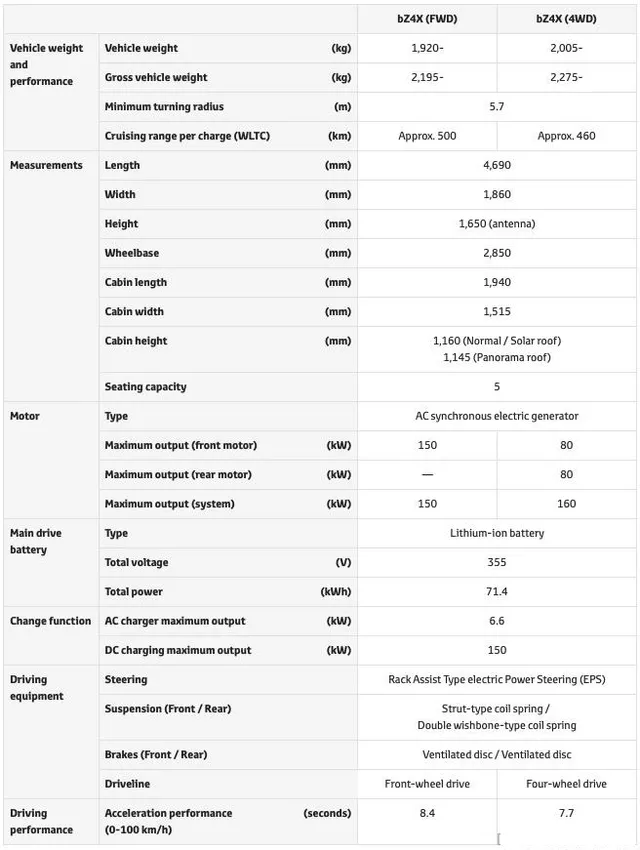
Overall Car Impression
Firstly, Toyota’s attempt at solar charging system is one of the more interesting features of the car. The solar panels do not seem to affect the car’s design much, even with iterations. The system charges the battery pack while the vehicle is stationary. Toyota and Hyundai have been experimenting with this feature lately. However, in China, glass sunroofs are more popular, and consumers will decide which is more important to them- practicality or aesthetics.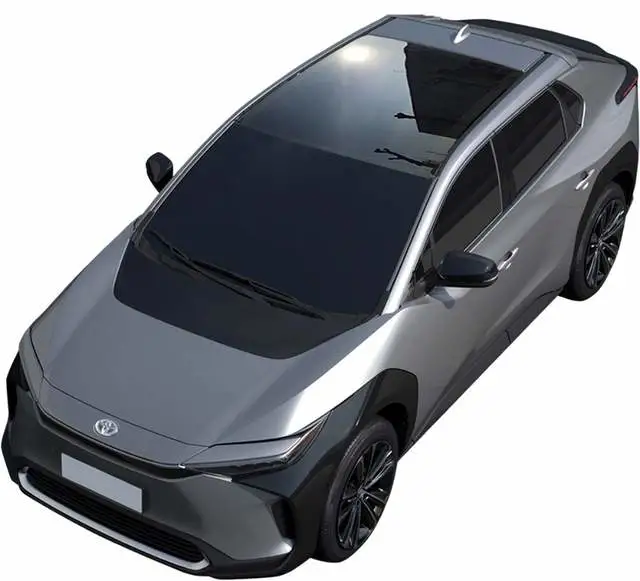
Toyota is undergoing changes. Toyota, which has always been cautious, has introduced a wire-controlled steering system, which has achieved Toyota’s so-called “single-action grip”, significantly reducing the burden of turning around, parking, and turning on winding roads. It improves the steering feel by independently controlling the steering torque feeling of power and the steering angle of the tires. The steering characteristics will change with the choice of driving mode, and meaningless vibrations from the tires are filtered out, only transmitting important vibrations of highway data. This wire-controlled steering system controls the tire movement to ensure the stability of the car when driving on uneven roads or activating lane tracking assistance.
Toyota’s cabin is still the same as before, and the difference between concept cars and actual designs is mainly that the steering wheel will be more realistic.
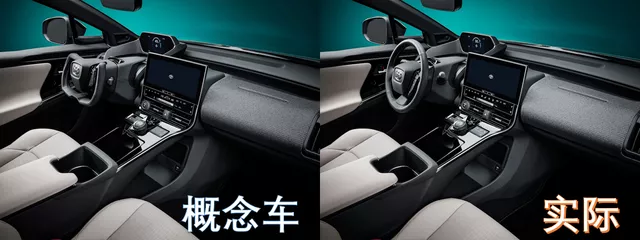
In my opinion, the cabin is the most significant part to reflect the gap between the original design and the requirements, and the gap is the largest. It may really take a long time to realize it.
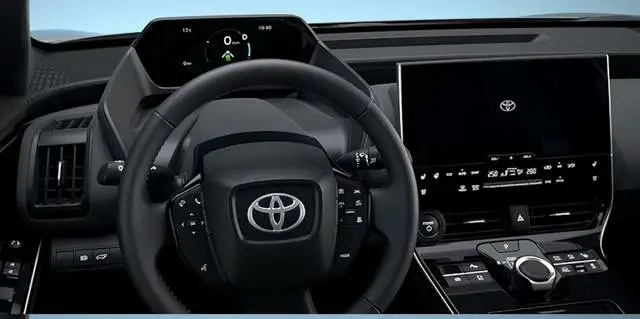
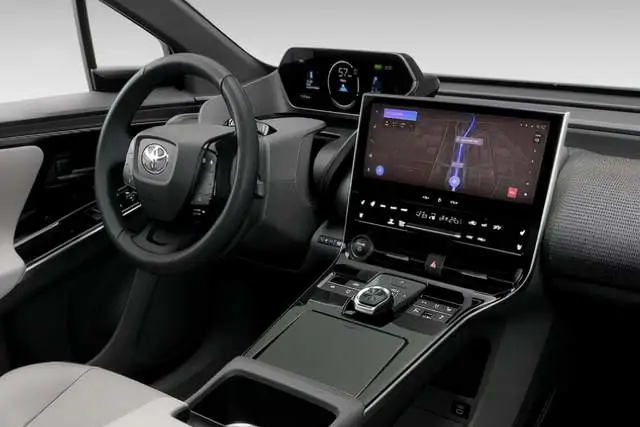
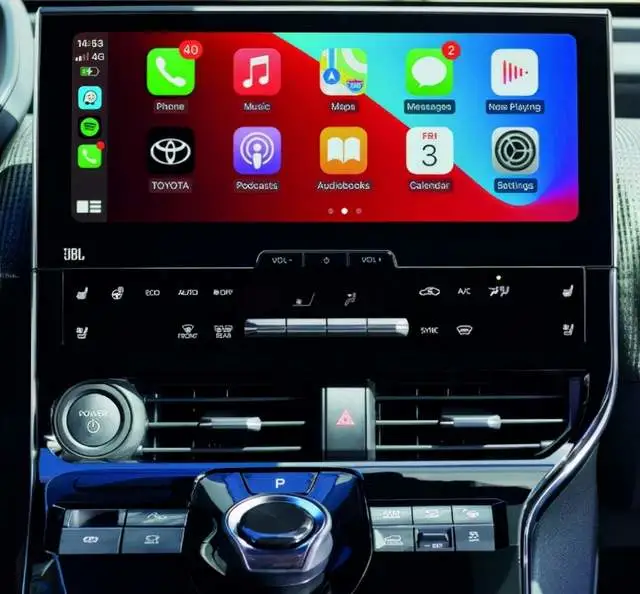
Information related to three-electricity
Toyota has released a lot of information this time, and Toyota used a lot of high-voltage cables to make the four-wheel drive system, as shown in the figure below.
As for the details of the battery, there is not much information disclosed. From the current information, this solution is also a module design similar to the previous one, without details, but may have some improvements.
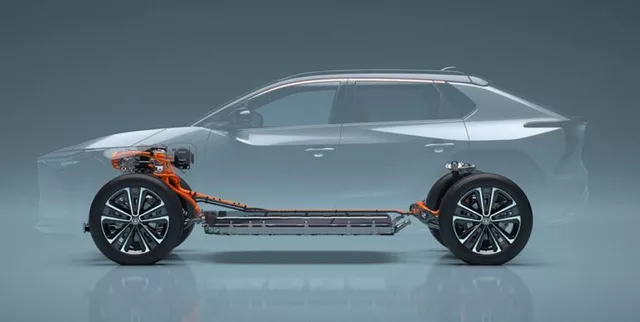
The strangest thing in it is that the high-voltage cable is twisted by a small device in the rear, and I don’t know what special purpose it has. Toyota has made a large integrated design for the distribution in the front of the car.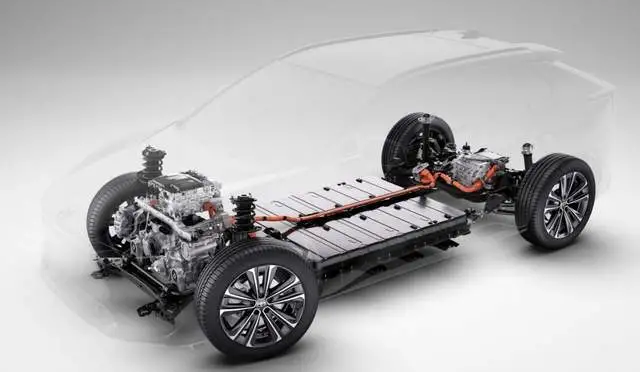
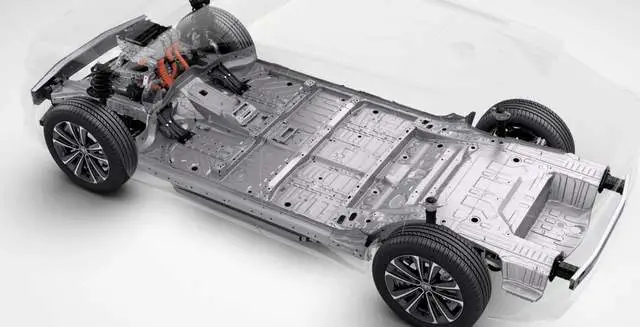
In summary, I feel that Toyota’s pursuit of quality has also been brought into the era of electric vehicles.
Whether the increase in battery life can bring about many changes in business models is something we can continue to explore and ponder in the future.
In my personal opinion, Toyota’s first global platform electric vehicle may still be relatively conventional, and they may not have completely changed their existing ideas.
This article is a translation by ChatGPT of a Chinese report from 42HOW. If you have any questions about it, please email bd@42how.com.